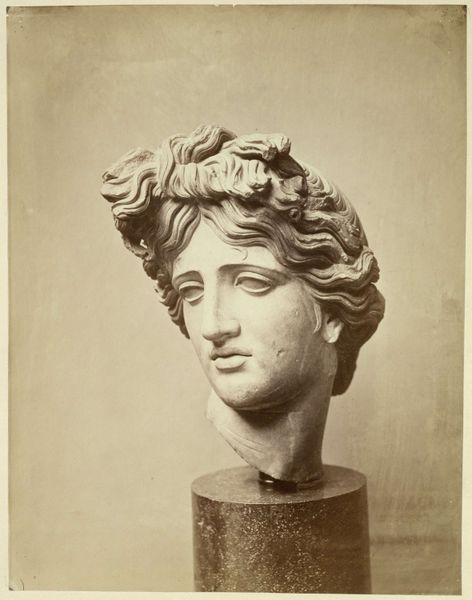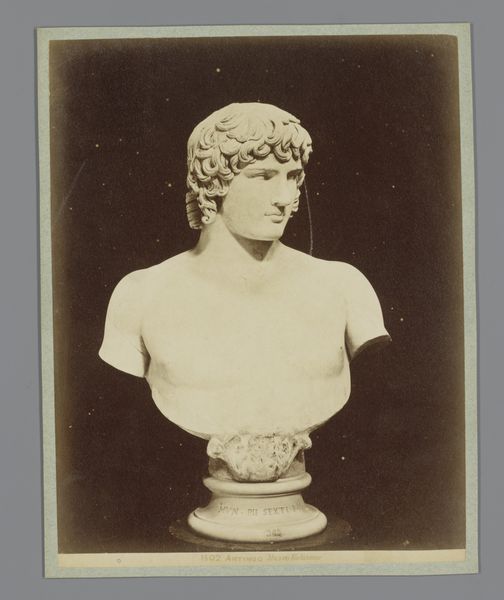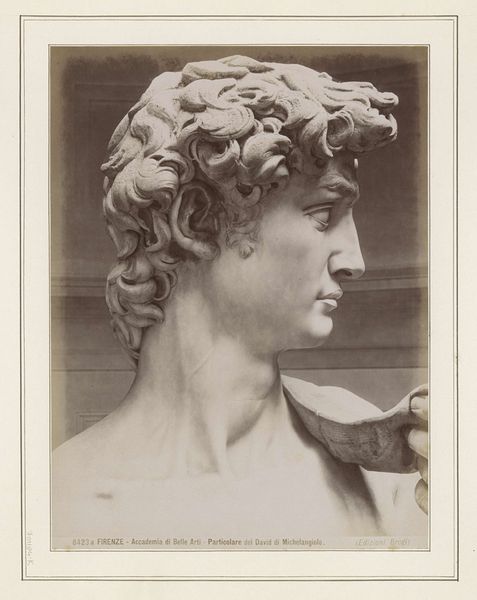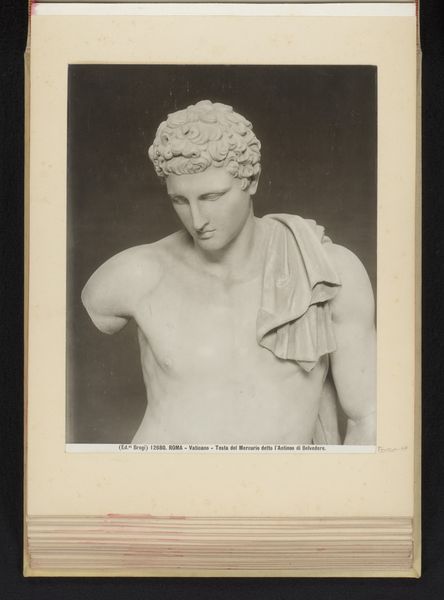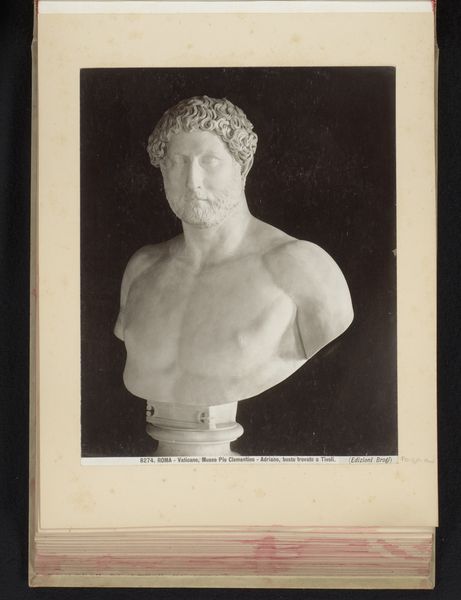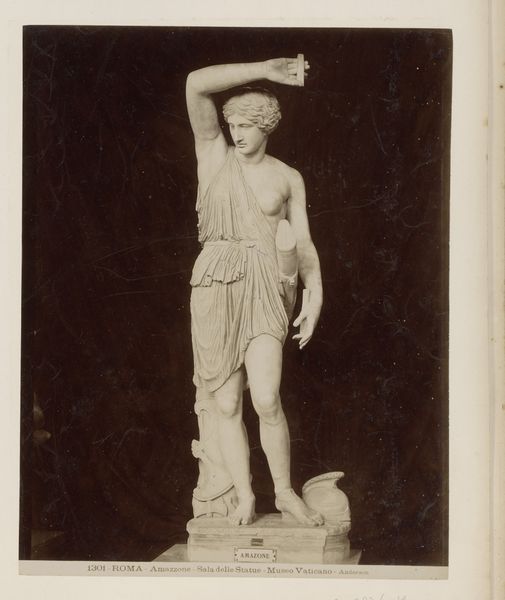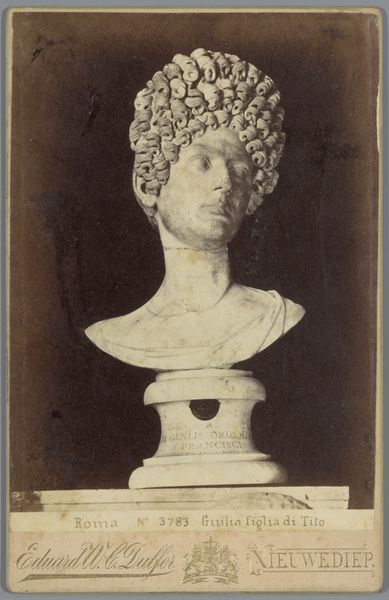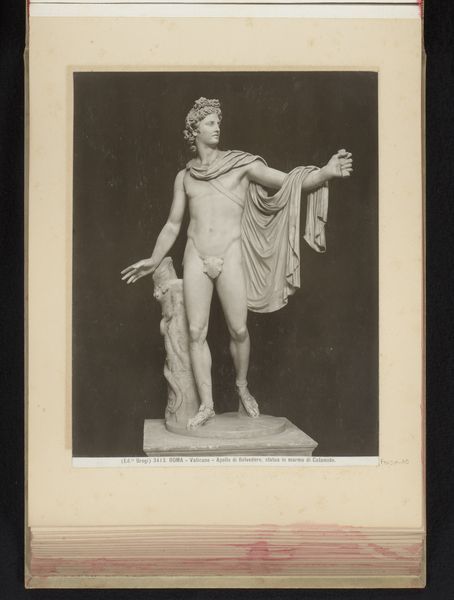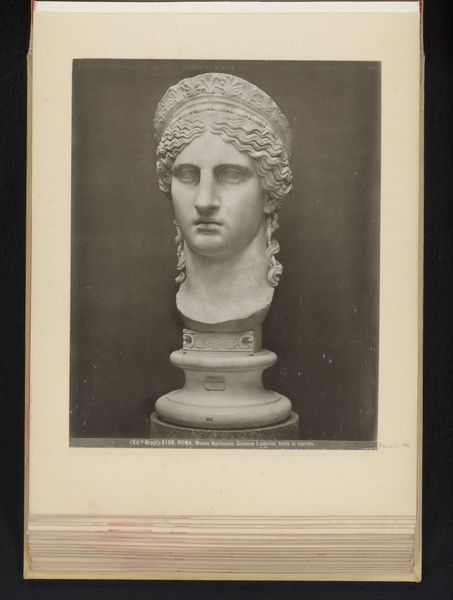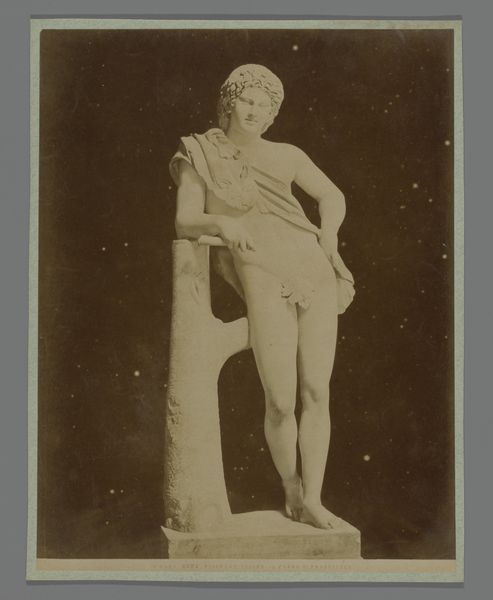
photography, sculpture, gelatin-silver-print, marble
#
portrait
#
classical-realism
#
photography
#
ancient-mediterranean
#
sculpture
#
gelatin-silver-print
#
history-painting
#
academic-art
#
marble
#
realism
Dimensions: height 259 mm, width 204 mm
Copyright: Rijks Museum: Open Domain
Editor: This is "Sculptuur van Antinoüs, Vaticaan," a photograph from around 1857 to 1875 by James Anderson. It depicts a marble sculpture, and there’s a quietness, almost a melancholy, in the downward gaze. The grapes and leaves interwoven in his hair seem significant. What do you read in this image? Curator: The image resonates with layers of cultural memory. This photograph revives Antinous, the Bithynian youth beloved by Emperor Hadrian. Hadrian deified Antinous after his untimely death. The sculpture itself attempts to capture idealized beauty, but through Anderson’s lens, it’s further filtered through the 19th-century gaze and burgeoning technology. Do you notice the contrast between the crisp detail of the statue and the dark backdrop? Editor: Yes, the dark backdrop makes the sculpture pop, isolating it in a way. The detail in the leaves and hair is stunning. Is there a reason grapes are incorporated? Curator: The grapes and leaves hint at transformation and the cycles of nature. In some interpretations, the downcast eyes may echo both mourning and an otherworldly knowledge, alluding to death and rebirth. The figure is thus imbued with symbolic weight. Editor: It's amazing how much symbolism is packed into one image. The photograph is more than just a record; it becomes an interpretation. Curator: Precisely. Anderson, through his framing and lighting, contributes to the ongoing cultural narrative surrounding Antinous, emphasizing themes of love, loss, beauty, and memory. And consider how the act of photographing the statue freezes and preserves it, turning an object of the past into something present. Editor: So interesting how photography can layer meaning onto existing art! It’s like the photograph adds another voice to a long conversation. Curator: Yes, each artistic interpretation is a palimpsest of meaning.
Comments
No comments
Be the first to comment and join the conversation on the ultimate creative platform.
